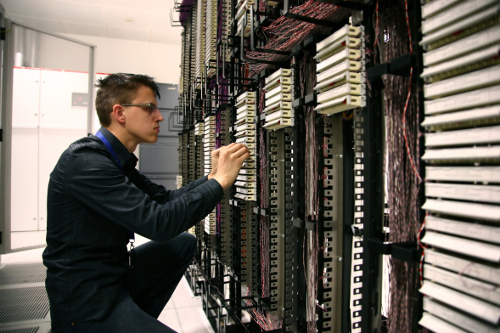According to a new study, access networks including modems, home gateways, and DSL Access Multiplexers (DSLAMs), are responsible for 70-80% of total network-based energy consumption. Even though each individual network component consumes relatively low amounts of energy, the number of devices, measured in millions, makes the overall consumption very high. The annual energy consumption figures reported by telecommunication companies are indeed staggering — Telecom Italia consumes 2.1 TWh annually, France Telecom - Orange 3.7 TWh, Telefonica 4.5 TWh, Verizon 9.9 TWh.
The study “Insomnia in the Access or How to Curb Access Network Related Energy Consumption” was presented at the ACM SIGCOMM 2011 conference, held in Toronto (Canada) between August 15th and 19th. It was carried out by Eduard Goma (Telefonica Research); Marco Canini (EPFL), Alberto Lopez Toledo, Nikolaos Laoutaris (Telefonica Research), Dejan Kostić (EPFL), Pablo Rodriguez (Telefonica Research), Rade Stanojević (Institute IMDEA Networks), and Pablo Yagüe Valentín (Telefonica Research). Dr. Stanojević has been Staff Researcher at IMDEA Networks since October 2010.
The authors of this paper have looked for opportunities to reduce the energy consumption of access networks. They have established that straightforward approaches such as Sleep-on-Idle (SoI) are not suitable in the context of access networks, due to the existence of light traffic that continuously flows between the end users and the internet. Consequently the paper proposes a new method, called Broadband hitch-hiking (BH2), in which end-users take advantage of available wireless networks in the neighborhood to allow them to switch off their home gateways when the traffic is light. On the ISP side, the study proposes a subtle technique that batches active lines to a set of line cards and allows the non-used line cards to move to sleep mode.
The study shows that a combination of BH2 and switching results in a reduction in the consumption of energy of up to 69%, which is close to the theoretical optimum. Additionally, switching off a subset of lines reduces the crosstalk interference, and the tests performed reveal speed-up of the available capacity of the DSL lines by up to 25%.
Energy efficiency is one of the main areas of research at IMDEA Networks. Thus, the Institute actively generates knowledge on a topic of key socio-economic concern. The Internet Society poses an environmental challenge, as its ever increasing traffic demands the optimization of energy performance in computation and communications. This study provides an innovative and viable solution to the conservation challenge, through the development of energy-aware computing and networking technology. Will we be able to find a balance between the technological and natural ecosystems? If so, research on energy efficiency is a positive way forward.

A DSL Access Multiplexer (DSLMA)

